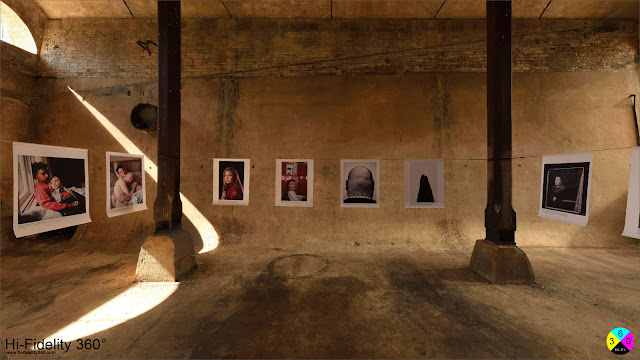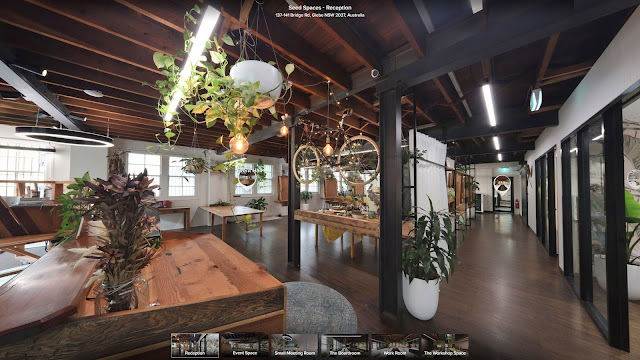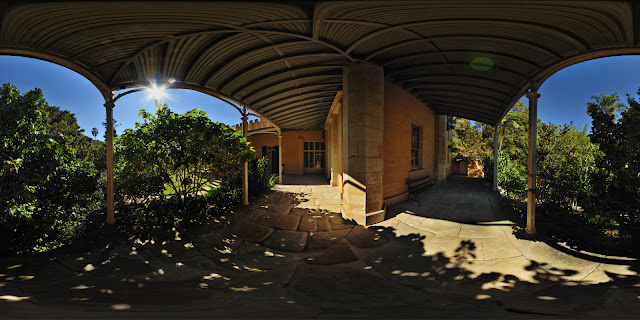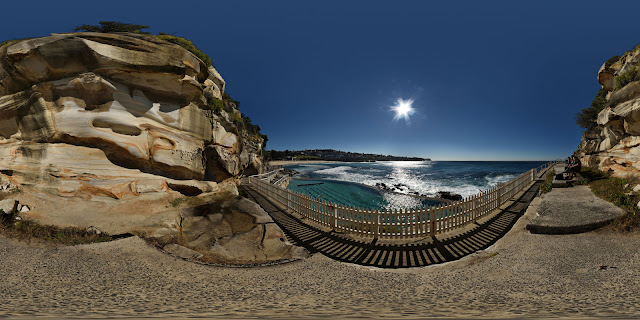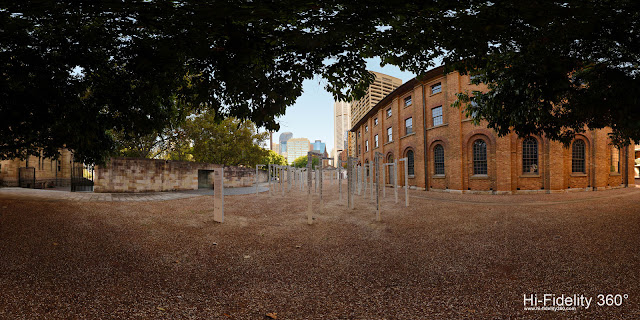It's a lot like film
making really, you need a beginning a middle and an end. It's story
telling. You do that with still images too, a travel story, fashion
story, lifestyle, the photographer illustrates 'the story' with
pictures. Virtual tour panorama photography – yes it really needs a
better name, VR maybe? Maybe not.. Anyway, this photography combines
aspects of film making and the traditions of still photography whilst
being something uniquely different. A 21st century hybrid
photo that is completed and experienced with a computer and software. Without which you are back to a flat static photo.
With the computer a
mobile phone, tablet or OCULUS type headset device you have an immersive
experience a lot like a movie. Some would say it puts you the viewer
at the centre of the experience, and I would certainly not argue with
that. The 'tour' part simply means multiple pictures joined together,
creating a loose narrative. Movies.. are also still pictures joined
together. Pictures in a sequence running at X number of frames a second, to create the illusion of
movement in time, like magic! Though you need the machinery to make it happen.
One of the great things
about, lets just call it Virtual Tour Photography (VTP). Is that you can
create a story, a narrative that is not locked into a fixed timeline
the way a film is. With a film you start at the start, and after how ever long the director decides, you arrive at the end. And if the film stops moving what you have
is a still photo again!
Architectural heritage photography by Hi-Fidelity 360
The 360 degree VTP
image is not fixed to a timeline and it's not a fixed point of view,
look up, down, in front, behind, anywhere you choose – when you
choose – for as long as you choose. Narrative, the sequence of images can also be decided by the viewer. If you want to you can; make a
movie from the many views provided by a single 360 VTP image. Budding film maker Robert Luxemburg took a single Street View image and directed and
narrated a Jean Luc Goddard style short film from it! He really
did, it's called Jean-LucGodard and Anne-Marie Miéville on Google StreetView. Is it
really them? For me; well that's another story, I do think it's true. Most impressively it makes the point, that any 360° image can be animated into a movie, and it's possible to link the pictures together into that fixed movie narrative too.
It's a cute and clever
little film but what can I say, the image quality is just terrible! I
guess that's what you get when you 'acquire' your picture(s) from a
car that drives around with a camera on top, collecting 'data' -
which is how Google sees pictures.
So lets think about
quality too. The novelty of the VTP wears off pretty quickly when parts of the picture crash into each other, overlapping walls, floors and details; distorting important parts of the picture when the scene should be smooth, mesmerising, perfect. Accurately presenting the reason it was
commissioned for in the first place. Small rooms can be particularly
challenging to 'gather data' from in the way that people view the
world, as can be seen in this 'Arts
& Culture' picture supplied by Google from inside the historic
Macquarie Lighthouse. More of a pictorial mash-up than immersive educational
experience.
 |
| Macquarie Lighthouse Stairs (with errors) Looking Up - Screenshot from Google |
Quality is important
and quality takes many forms starting with the vision for a
project. As the saying goes, 'if you don't know where you are going
you will probably end up somewhere else'. So a clear vision from the beginning
about a projects end result is important.
Then there is the look and feel of the project. I started shooting my Ocean Pools project in Sydney
during the southern hemisphere's winter months. Why? Because I would
have less people in the pools and populating the landscape, and winter light in Sydney is just
glorious. Soft and very clear with beautiful blue skies. Details are
revealed without the issues of the harsh summer sun - with it's very
bright highlights and deep shadow. When shooting 360s outdoors
you will always be shooting directly into the sun, and away from it
on every shot. This is something that can often be avoided with
traditional photography. It took me quite some time to work out how
to deal with sun flare, along with the extreme highlights and shadows
of most pictures – oh for that even softer European light!
Then there are the
artistic and creative choices about how the picture should look after
processing. HDR – High Dynamic Range – has been quite popular
with some 360° photographers. It's hardly surprising given the
difficulties of balancing the dynamic range, the light and shade of a
picture that sees everything. Though to my eye, most HDR simply looks
artificial. And I like my pictures to look like the subject that is
the place. Ideally looking at it's best, but treated in such a way that when
I see it in real life, I don't feel like I've been hoodwinked or cheated.
Fortunately as a commercial photographer I have both experience and
tools at my disposal to fulfil this optimised 'natural' vision for
the finished image.
Perhaps the final piece
of the quality puzzle is that old axiom of 'less is more'. In this
case key shots in key places. Where you put the camera, one's point-of-view has always been one of the most critical skills for
photographers and cinematographers alike. Never has this skill been
more important or the lack of it more apparent than in 360 degree
photographs. There is literally nowhere to hide, so the position of
the camera is paramount to ensure the picture looks good, interesting and
exciting, up down and all around. It's a huge call and one
that takes time to develop an eye for.
Once the pictures have
been decided, made and processed. Then they can they can be used to create the story you have planned to tell. That story can and should be more than a so-called 'virtual
tour'. After all it's your story, the story of your place, the
history, the elements, the people, the experiences. VTR, Virtual
Tour Photography made with a vision for the project
is a movie like,
cinematic experience where the viewer chooses the timeline and level
of engagement, done well it's like being there.
I've been putting together 360° stories that highlight a place or places, a hotel or destination to show how a presentation can work, and work for you. The pictures illustrating this blog post/article/essay all click through to the full 360° multi image story, the whole Virtual Tour.. Done with vision, your story will be memorable, the audience with be interested and your
customers engaged. Contact me to discuss creating your story in 360 degrees.
Sails Resort and Uluru-Kata Tjuta National Park Virtual Tour
Telling Stories in Pictures the World Over..
Kent Johnson, Sydney, Australia & The World.
0433 796 863
